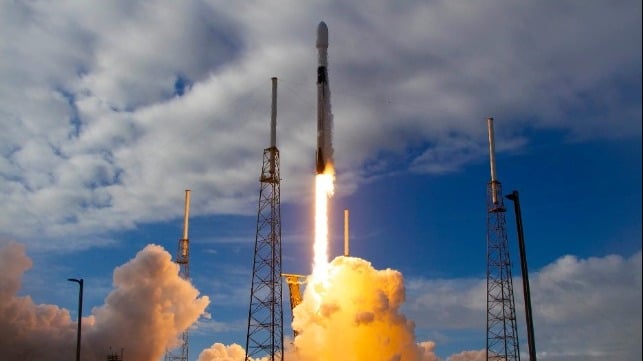Driving Better Shipping Through Improvements In Data and Connectivity

As the maritime industry knows well, ship-to-shore connectivity poses a significant challenge. The terrestrial communication networks that most industries take for granted cease to be an option more than a few miles offshore. For the last half-century, satellite networks have been the answer. Companies like Iridium saw success offering a way for cargo ships and yachts to keep their crew and passengers connected in the middle of the ocean. Their customers have high data-throughput needs - such as real-time communications, whether for conducting business or calling in emergencies - and that is the demand that early satellite providers have solved for.
Today, maritime use cases are much more varied. The Internet of Things (IoT) has revolutionized the ability to track vessels and cargo, monitor crew safety and gather critical weather data. In fact, a report by satellite company Inmarsat suggests the maritime industry is more open to adopting connected IoT technologies than other major sectors like agriculture or mining.
Newer entrants into the satellite connectivity market are designing their business models - and satellite constellations - around how best to serve lower data volume IoT use cases, such as asset tracking and remote sensor monitoring. UK startup Lacuna Space, for example, is planning to launch 32 Low Earth Orbit (LEO) satellites for this purpose, and California-based Swarm Technologies has 93 satellites in orbit - with 57 more planned - to connect commercial IoT devices on every continent.
A key way that new satellite companies are serving the maritime IoT industry is by lowering cost. Innovations in satellite design and lower-cost launch options have allowed newer providers to charge single-digit monthly data prices per device. This is especially important in the maritime industry, where IoT devices typically need to be deployed at scale to be effective (a tracking device on every shipping container, for instance).
More data points lead to better insights. For example, Sofar Ocean, an ocean intelligence provider, is deploying thousands of its IoT-enabled buoys along key maritime routes in order to gather hyper-local oceanic weather data. The data informs Sofar’s predictive models for optimized shipping routes, particularly in areas that are so remote that they are currently unmonitored. Until now, connecting this many sensors through legacy satellite providers has been prohibitively expensive, including high ongoing operational costs. But with newer satellite solutions, Sofar can keep connectivity costs low while increasing the number of sensors they can afford to deploy into every ocean.
Newer satellite solutions also retain - or sometimes add - other capabilities that can benefit IoT use cases. Fleet Space Technologies incorporates edge computing for IoT applications that require real-time data analysis. Swarm offers AES256 GCM encryption to add an extra layer of cybersecurity, as well as two-way data transfer to send commands to, and subsequently return data from, remote devices.
Another synergy between newer satellite companies and IoT applications is that speed and innovation is in their DNA. Maritime IoT technologies are rapidly advancing, and satellite connectivity options are keeping pace. Companies revolutionizing the maritime IoT space now have access to connectivity infrastructure that is aligned with their fast-paced operating models and technological innovations.
Advances in maritime IoT technologies, and the satellite networks that support them, are already making data more globally accessible and affordable than ever before. With real-time data connectivity from ocean to ocean, the industry is now armed with the tools and insights to set common standards in order to further accelerate the adoption of connected IoT technology. Organizations such as the Digital Container Shipping Association (DCSA) have compiled a set of standards governing everything from remote refrigerated container monitoring to track & trace, all in an effort to improve supply chain visibility, reduce loss and create a shared intelligence network in the industry. Meanwhile, hardware manufacturers like Samsara and Blackberry are developing cellular-based asset tracking products for terrestrial use.
Thanks to newly affordable satellite communications networks, the dawn of globally available asset tracking is now here. The critical data points gleaned through new technologies ensure that maritime shipping - responsible for transporting 90 percent of the world’s goods - will be a faster, safer and more environmentally-friendly endeavor, with benefits for the global supply chain and consumers around the world.
Tim Janssen is the co-founder and CEO of Sofar Oceans, which operates the largest open ocean weather sensor network in the world. Sofar's mission is to provide unique ocean insights to science, society and industries to support a more sustainable interaction with our oceans and our planet.
Dr. Ben Longmier is the co-founder and CTO of Swarm. He was previously the Founder and CEO of Aether Industries (acquired by Apple in 2015). While at Apple, Ben led an Aerospace R&D effort for several company objectives. Prior to working at Apple, Ben was a tenure track Assistant Professor of Aerospace Engineering at the University of Michigan. Ben holds a PhD in Engineering Physics from the University of Wisconsin-Madison and worked as a Postdoctoral Fellow at NASA-JSC.
The opinions expressed herein are the author's and not necessarily those of The Maritime Executive.
